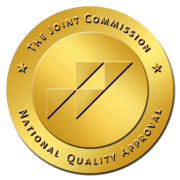The Emerging Advantages of Outpatient Treatment of Addiction
Under normal conditions, a surprisingly few residential days are covered by managed care insurance and research demonstrates little advantage with residential over intensive outpatient programs (IOP) for non-suicidal or homeless patients. Financial and occupational problems commonly grow when entering residential treatment and patients discharged from residential or inpatient programs often encounter overwhelming complications and wreckage once they return home.
Outpatient treatment gains are applied and practiced in daily life while professional and group support is immediately available as the newly sober person encounters triggers, wreckage, relationship conflicts, occupational problems and general distress. The clinical take-home with outpatient treatment is 100%!
Cases for Residential or Outpatient
The debate favoring residential treatment often promotes several advantages: providing respite for the patient; removing antecedent/ triggering cues during therapy; providing tangible supports while delivering more and continual treatment; providing psychiatric, medical and ancillary therapies; and suggesting to the patient that their problems are more severe than would be implied if treatment were to be offered on an outpatient basis.
“Treatment on an outpatient basis allows a more valid assessment of environmental, cognitive and emotional antecedents of drinking episodes and drinking urges on the part of the patient, and allows the patient to test new coping strategies while still within a supportive counseling relationship. These conditions would be expected to foster greater generalization of learning in treatment to the patient’s natural environment” (Annis, 1986, p. 183).
Outpatient treatment mobilizes available supports (family, family doctor, mutual support organizations) rather than creating temporary and artificial supports that will be removed once the residential experience ends. Indigenous recovery supports are activated during the course of outpatient treatment. The transition from active treatment into aftercare is much less abrupt. Clinical changes, recovery supportive resources and relationships are likely to be maintained.
Research has demonstrated that the outcome findings between residential vs. outpatient treatment are at best mixed. Many studies from the eighties demonstrated that there were few if any differences between the clinical outcomes of residential and outpatient treatment. Many of these and subsequent studies have been criticized for research design flaws which bring to question the reliability of their results (Finney et al., 1995).
“…(M)ore severe patients experienced better alcohol and drug outcomes following in-patient/residential treatment versus out-patient treatment; on the other hand, patients with lower baseline ASI drug severity had better drug outcomes following out-patient treatment than in-patient treatment. Treatment setting was unrelated to alcohol outcomes in patients with less severe ASI alcohol scores. Results provide some support to the matching hypothesis that for patients who have higher levels of substance use severity at intake, in-patient/residential treatment settings is associated with better outcomes than out-patient treatment” (Witbrodt et al. 2007). Opposing findings were cited by Burdon et al. 2007 which state that outpatient aftercare was as effective as residential aftercare regardless of the severity level of parolees.
“Compared to those receiving no treatment, those receiving nonresidential treatment took longer to fail or recidivate. However, those receiving residential treatment did not differ from those who received no treatment in time to failure. In the treatment-only model, nonresidential treatment participants took longer to fail than their matched residential treatment counterparts” (Krebs et al. 2009).
Longer durations and greater intensity of treatment episodes have been tied to more successful treatment outcomes. Regardless of whether the treatment is provided in residential or outpatient settings, if the patient is satisfied and remains involved with treatment, their outcome will likely be better than shorter or sporadic episodes of care (Hser, et al.).
The “Florida Model”
Second to the cost-benefit issue is the question that commercial and government payors pose: “Why should healthcare benefits cover the cost of room and board?” SAMHSA grants, Medicaid, and most commercial healthcare plans increasingly exclude the patient’s costs of living from legitimate healthcare expenses wherever possible. Active treatment and related costs are considered to be separate and distinct from twenty-four hour accommodation and support.
The “Florida Model” of treatment consists of sober-living accommodations that are separated from, but complimented by intensive outpatient treatment. The model was born out of the need to tease board and care costs from active treatment. The overall cost of the residential component is significantly reduced by the elimination of regulatory oversight and the corresponding staffing and facility demands. The consumer’s health insurance usually pays for the outpatient treatment component, leaving the consumer to cover the relatively low cost of the sober-living home.
Residential vs. Outpatient Investments & Returns
Residential treatment will produce better profit/ development margins if critical business volumes can be achieved. The higher operating costs, administrative time, and professional oversight of residential components draw decision-makers to focus on their residential treatment at the expense of their less complex and less lucrative outpatient services. It is clear to the margin-oriented administrator that short-term financial gains will be best made from a residential model if only the beds can be filled.
To decide upon a longer-term course of action, a treatment program’s administration is caused to choose between the demands expressed by the consumer and/or payer of care, the evidence of clinical and financial outcomes influencing longer-term business trends, or the interest in financial return from a short-term investment.
If your principal stakeholder is the consumer or payer of care, cost-effectiveness must take priority. Outpatient treatment, whenever clinically feasible, is the primary access point for both private and public addiction treatment. When higher acuity conditions warrant intensive supervision at the beginning of a treatment episode, “step-down” outpatient treatment provides the necessary duration of care and the sober adaptation to a normative living environment.
In our time of cost cutting and efficiency planning, outpatient treatment coordinated with detoxification, residential stabilization, medical and mental health care, and sober living answers many of our society’s fiscal problems. Coupled with sober living accommodations, outpatient treatment emerges as the cost-effective and accessible venue of care for many who are in need of recovery.
David Lisonbee is President and Chief Executive Officer of Twin Town Corp., Dba Twin Town Treatment Centers, which operates a network of six Los Angeles and Orange County based outpatient addiction treatment programs.
Possessing over twenty-seven years of behavioral health management and executive experience, Mr. Lisonbee oversees corporate governance, development, finance, compliance, quality management and clinical service. He completed his Bachelors Degree in psychology and has assorted graduate work and continuing education in psychology, public and hospital administration, and addiction science. Prior to operating Twin Town Treatment Centers,, Mr. Lisonbee operated and developed psychiatric hospitals and outpatient psychiatric programs in such roles as Director, CEO and Regional President.
BIBLIOGRAPHY:
“Subjects benefited equally from outpatient and residential aftercare, regardless of the severity of their drug/alcohol problem.” Differential effectiveness of residential versus outpatient aftercare for parolees from prison-based therapeutic community treatment programs. William M Burdon1, Jeff Dang2, Michael L Prendergast1, Nena P Messina1 and David Farabee 1, *Corresponding author: William M Burdon wburdon@ucla.edu, 1University of California, Los Angeles, Integrated Substance Abuse Program, Substance Abuse Treatment, Prevention, and Policy 2007, 2:16 doi:10.1186/1747-597X-2-16
“Previous reviews have concluded that there was no evidence for the superiority of inpatient over outpatient treatment of alcohol abuse, although particular types of patients might be more effectively treated in inpatient settings. We consider the implications of our findings for future research, especially the need to examine the conceptual rationales put forward by proponents of inpatient and outpatient treatment, i.e. mediators and moderators of setting effects.” The effectiveness of inpatient and outpatient treatment for alcohol abuse: the need to focus on mediators and moderators of setting effects, JOHN W. FINNEY, ANNETTE C. HAHN, RUDOLF H. MOOS Article first published online: 24 JAN 2006 DOI: 10.1046/j.1360-0443.1996.911217733.x Addiction Volume 91, Issue 12, pages 1773–1796, December 1996
“Greater service intensity and satisfaction were positively related to either treatment completion or longer treatment retention, which in turn was related to favorable treatment outcomes. Patients with greater problem severity received more services and were more likely to be satisfied with treatment. These patterns were similar for patients regardless of whether they were treated in outpatient drug-free programs or residential programs. The positive association between … greater levels of service intensity, satisfaction, and either treatment completion or retention-and treatment outcome strongly suggests that improvements in these key elements of the treatment process will improve treatment outcomes.” Relationship between drug treatment services, retention, and outcomes. Hser YI, Evans E, Huang D, Anglin DM. Neuropsychiatric Institute, University of California-Los Angeles, 1640 South Sepulveda Boulevard, Los Angeles, CA 90025, USA. yhser@ucla.edu
National studies indicate significant reductions in recidivism following outpatient treatment Pre-treatment Post-treatment, Drug Abuse Reporting Program (DARP), National Treatment Improvement Evaluation Study (NTIES), Treatment Outcome Prospective Study (TOPS)
Outpatient treatment of probationers leads to fewer arrests at 12 and 24-month follow-up (Lattimore et al., 2005) vs. untreated probationers
High-risk probationers receiving outpatient treatment experience 10-20% reductions in recidivism (Petersilia & Turner, 1990, 1993)
Reductions in probationer recidivism durable for 72 months after outpatient treatment (Krebs et al., 2009)
Outpatient treatment more effective than residential treatment for drug-involved probationers (Krebs et al., 2009) and during reentry (Burdon et al., 2004)
Greater benefits for the cost for outpatient treatment in non-offender samples (CALDATA, French et al., 2000, 2002)
Aftercare services among drug-involved offenders can significantly reduce substance use and re-arrest (Butzin et al., 2006)
Outpatient aftercare services can reduce likelihood of re-incarceration by 63% (Burdon et al., 2004)
Aftercare services provide $4.4 – $9 return for every dollar invested (Roman & Chafing, 2006)
“…(M)ore severe patients experienced better alcohol and drug outcomes following in-patient/residential treatment versus out-patient treatment; on the other hand, patients with lower baseline ASI drug severity had better drug outcomes following out-patient treatment than in-patient treatment. Treatment setting was unrelated to alcohol outcomes in patients with less severe ASI alcohol scores. Conclusions Results provide some support to the matching hypothesis that for patients who have higher levels of substance use severity at intake, treatment in in-patient/residential treatment settings is associated with better outcomes than out-patient treatment.” Day Hospital and Residential Addiction Treatment: Randomized and Nonrandomized Managed Care Clients; Jane Witbrodt, Jason Bond, and Lee Ann Kaskutas Alcohol Research Group, Constance Weisner, University of California, San Francisco, Gary Jaeger; Kaiser Foundation Hospital, David Pating, Kaiser San Francisco Medical Center, Charles Moore Sacramento Kaiser Permanente, Journal of Consulting and Clinical Psychology Copyright 2007 by the American Psychological Association, 2007, Vol. 75, No. 6, 947–95
“Compared to those receiving no treatment, those receiving nonresidential treatment took longer to fail or recidivate. However, those receiving residential treatment did not differ from those who received no treatment in time to failure. In the treatment-only model, nonresidential treatment participants took longer to fail than their matched residential treatment counterparts.” The impact of residential and nonresidential drug treatment on recidivism among drug-involved probationers: A survival analysis. Krebs, C. P., Strom, K. J., Koetse, W. H., & Lattimore, P. K. (2009). Crime & Delinquency, 55, 442-471.
DO YOU HAVE ANY ADDITIONAL QUESTIONS OR COMMENTS?
866.594.8844
contactus@twintowntreatmentcenters.com



